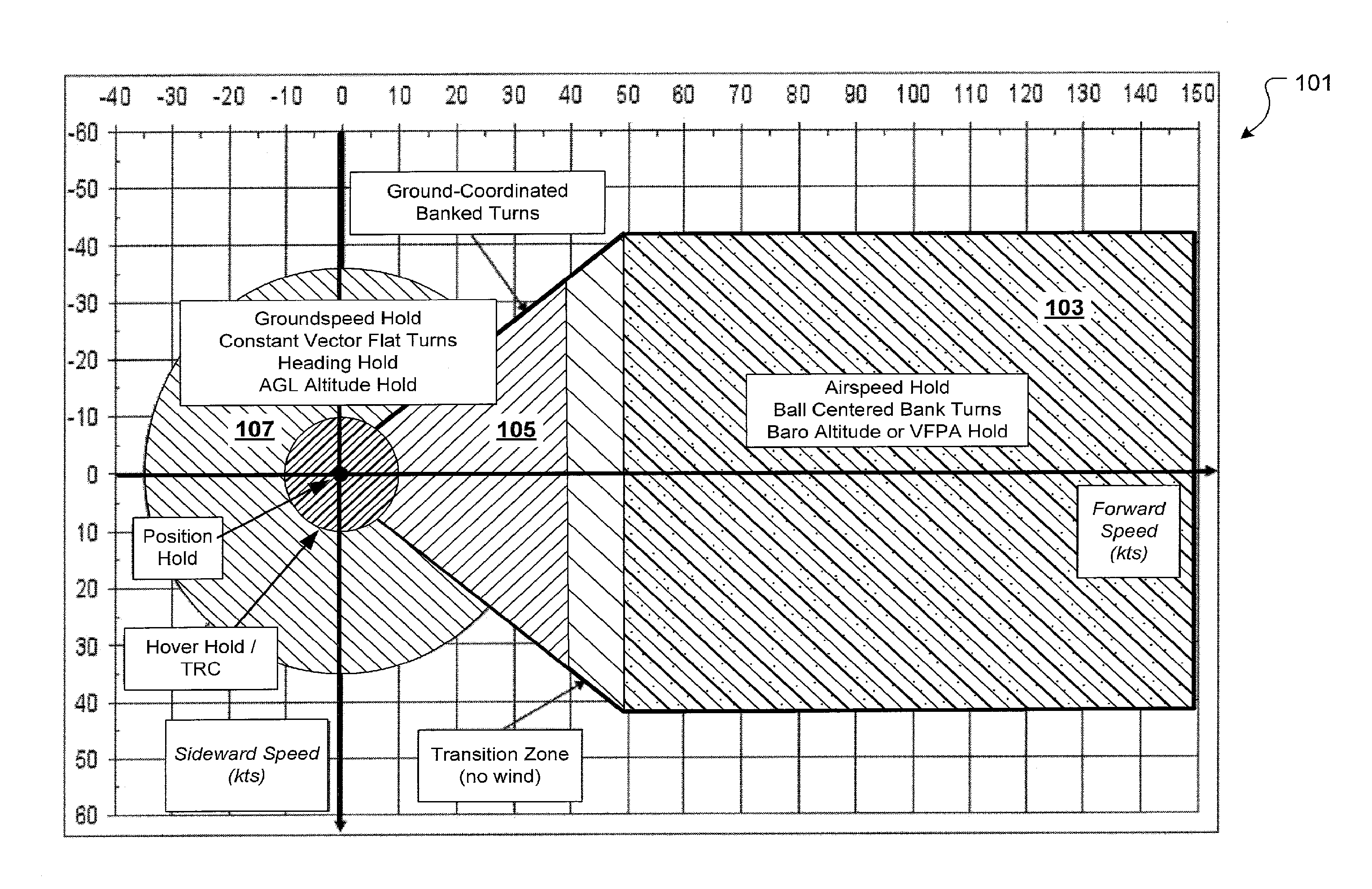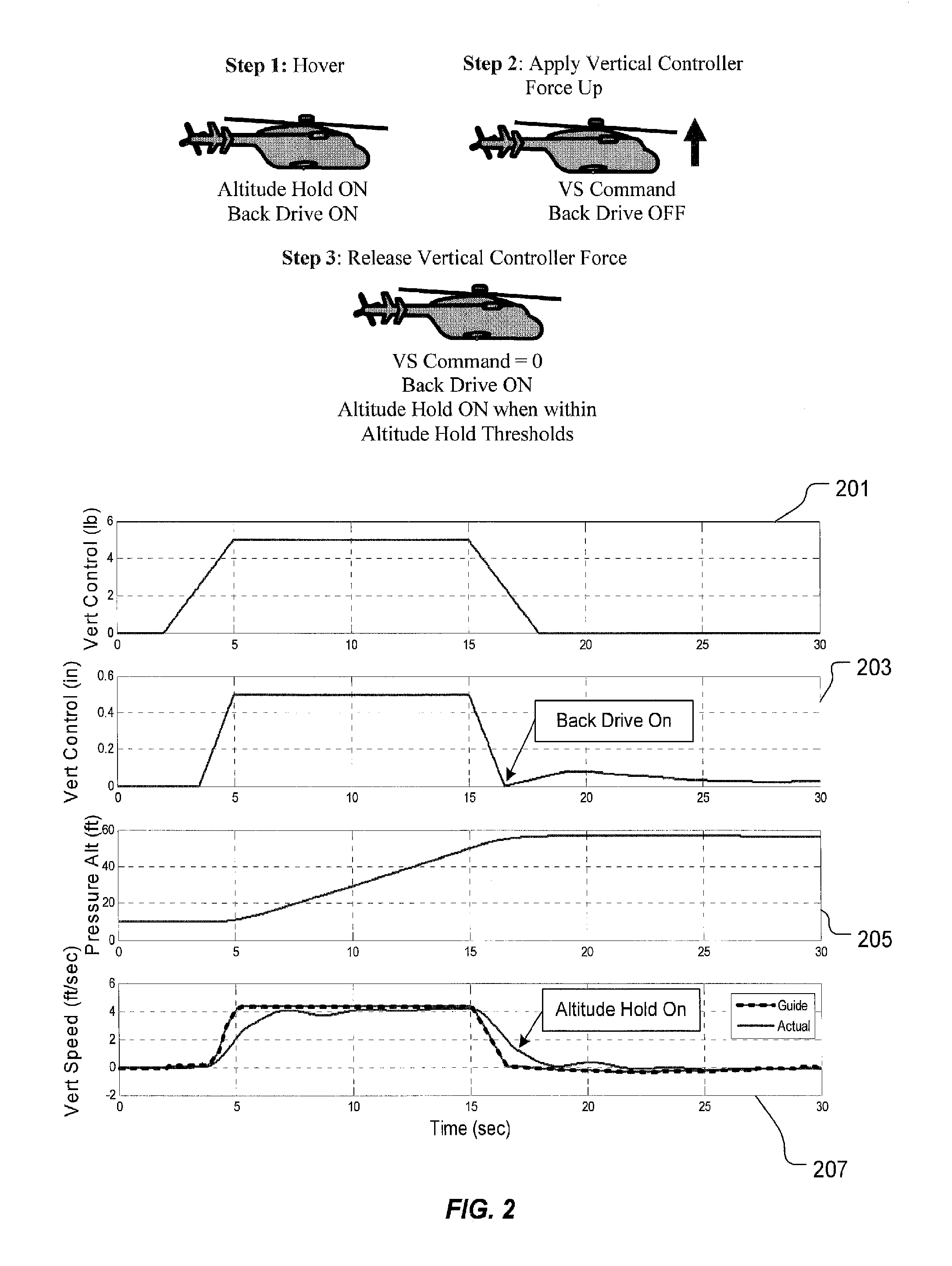Flight Control Laws for Vertical Flight Path
a flight control and vertical flight technology, applied in the field of flight control systems, can solve the problems of misjudging the vertical flight path, pilots might accidentally fly into an external hazard, and maximum actuation rates must be limited,
- Summary
- Abstract
- Description
- Claims
- Application Information
AI Technical Summary
Benefits of technology
Problems solved by technology
Method used
Image
Examples
Embodiment Construction
[0031]The flight control laws enable precise vertical flight path control (VFPC) throughout the flight envelope, while providing tactile feedback to the pilot on aircraft power state. In the absence of vertical control inputs by the pilot, the control laws will hold either altitude or VFPA. Vertical beep inputs enable precise changes to either altitude or VFPA. During vertical hold and beep operations, the cockpit vertical controller will be back driven to approximately match the actual vertical command being sent to the aircraft's vertical controls (main rotor collective pitch for helicopters). Pilot inputs into the vertical controller will command changes in VS.
[0032]FIG. 1 shows a representative flight envelope 101 with the control law modes designed to enable GRM. For this invention, region 103 depicts the higher speed VFPC envelope, while region 105 and region 107 depict the low speed VFPC envelope. At higher speed, VFPC will hold either barometric altitude or VFPA. With the in...
PUM
 Login to View More
Login to View More Abstract
Description
Claims
Application Information
 Login to View More
Login to View More - R&D
- Intellectual Property
- Life Sciences
- Materials
- Tech Scout
- Unparalleled Data Quality
- Higher Quality Content
- 60% Fewer Hallucinations
Browse by: Latest US Patents, China's latest patents, Technical Efficacy Thesaurus, Application Domain, Technology Topic, Popular Technical Reports.
© 2025 PatSnap. All rights reserved.Legal|Privacy policy|Modern Slavery Act Transparency Statement|Sitemap|About US| Contact US: help@patsnap.com



